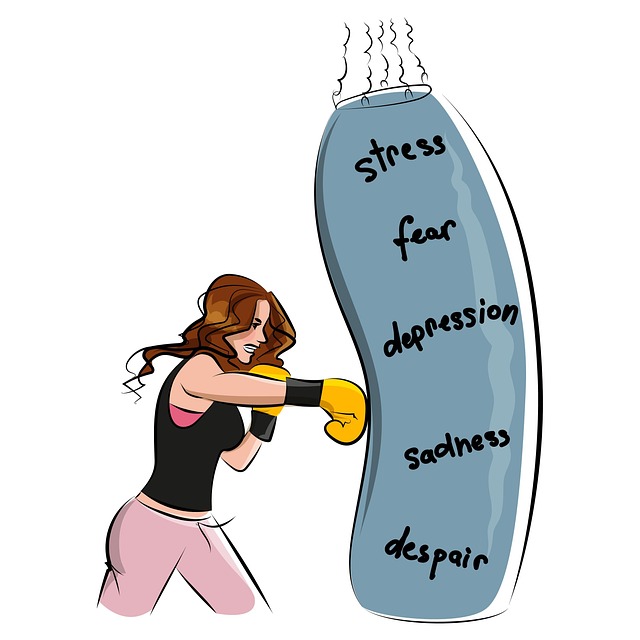Mental health professionals tackling alcohol abuse among teens face complex challenges, from intense therapy settings to traumatic disclosures. They must handle sensitive information with utmost care and confidentiality. To mitigate risks and maintain their well-being, public awareness campaigns and journaling exercises are essential. Identifying high-risk cases through comprehensive evaluations is crucial, integrating conflict resolution, cultural sensitivity, and risk management strategies for effective therapy for Adolescent Teens Alcohol Abuse. Robust mitigation practices create a supportive environment, enhancing emotional well-being and leading to successful therapeutic outcomes.
Mental health professionals play a vital role in guiding individuals towards healing, but they also face unique risks. This article explores the critical aspect of risk assessment in therapy settings, focusing on adolescent teens and potential issues like alcohol abuse. We delve into understanding specific dangers, identifying high-risk cases, and implementing best practices for mitigation. By examining these key areas, professionals can enhance client safety and foster a secure therapeutic environment.
- Understanding the Risks: Exploring Potential Dangers in Therapy Settings
- Assessing Vulnerabilities: Identifying High-Risk Cases among Adolescent Teens
- Mitigation Strategies: Best Practices for Safeguarding Mental Health Professionals and Clients
Understanding the Risks: Exploring Potential Dangers in Therapy Settings

Mental health professionals are often on the front line when it comes to addressing complex issues like alcohol abuse among adolescent teens. Understanding the risks inherent in therapy settings is crucial for mitigating potential dangers. Therapy environments can be intense, as clients may disclose traumatic experiences or express severe emotional distress. This information must be handled with utmost care and confidentiality to protect both the client’s privacy and the therapist’s well-being.
In addition to direct client interactions, therapists face indirect risks through exposure to difficult topics like substance abuse. Public Awareness Campaigns and Mental Wellness Journaling Exercise Guidance can play a vital role in stress reduction methods for professionals, helping them cope with the emotional weight of their work. The development of such strategies is essential not only for maintaining therapists’ mental wellness but also for ensuring they can provide the best possible care to their clients.
Assessing Vulnerabilities: Identifying High-Risk Cases among Adolescent Teens

Identifying high-risk cases among adolescent teens is a critical aspect of risk assessment for mental health professionals. This age group often faces unique challenges, including alcohol abuse, which can significantly impact their mental well-being. Through comprehensive evaluations, therapists can uncover vulnerabilities that may not be immediately apparent. By integrating conflict resolution techniques and empathy building strategies, mental health professionals can foster stronger connections with teens, encouraging open communication and early intervention.
Cultural sensitivity in mental healthcare practice is also essential when assessing adolescent teens. Understanding the diverse backgrounds and experiences of this population allows for more accurate interpretations of behaviors and symptoms. This nuanced approach ensures that therapy for adolescent teens alcohol abuse addresses not just the immediate issues but also the underlying cultural factors that may contribute to their vulnerabilities.
Mitigation Strategies: Best Practices for Safeguarding Mental Health Professionals and Clients

Mental health professionals play a vital role in facilitating emotional healing processes and promoting emotional well-being for their clients. To safeguard both practitioners and patients, implementing robust mitigation strategies is essential. These best practices encompass a multi-faceted approach to risk assessment and management.
One key strategy involves establishing comprehensive safety protocols within the therapeutic environment. This includes ensuring secure communication channels, regular staff training on crisis intervention techniques, and readily accessible resources for stress management and emotional support. Fostering open dialogue around mental health awareness can encourage professionals and clients alike to recognize and address potential risks effectively. Additionally, integrating therapy for adolescent teens with alcohol abuse issues into treatment plans can mitigate specific risks associated with substance misuse. By adopting these measures, mental health professionals can create a supportive atmosphere that prioritizes both their emotional well-being and the successful outcomes of client therapies.
Mental health professionals play a crucial role in helping adolescent teens grappling with issues like alcohol abuse. However, navigating these sensitive cases comes with risks. By understanding potential dangers, assessing client vulnerabilities, and implementing best practices for mitigation, therapists can ensure safer therapy settings. This comprehensive approach not only safeguards professionals but also fosters effective treatment outcomes for the teens they serve.














